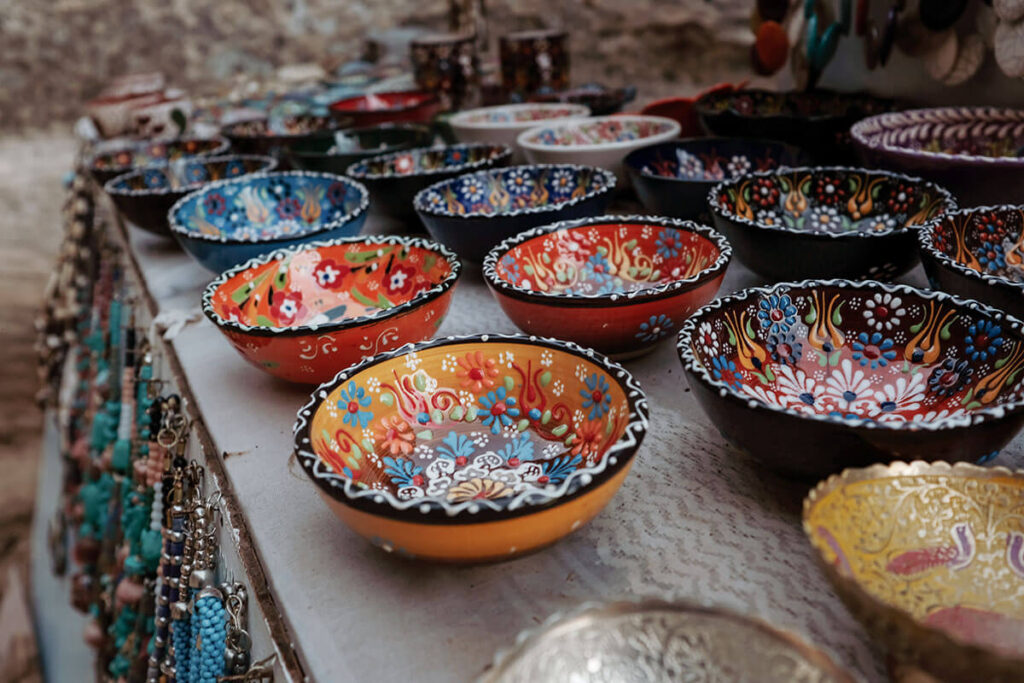Petra is undoubtedly the main attraction of Jordan, with hundreds of thousands of visitors each year. The ancient city was declared a UNESCO World Heritage Site in 1985. What many visitors don’t know is that there are more historical sites to explore around Petra. To the north of Petra, you’ll find Neolithic settlements like Ba’ja village, Shkarat Msaied and Al Beidha. In the latter settlement lies Siq al-Barid, better known as Little Petra.
Al Beidha, inhabited thousands of years BC
Like Petra itself, Al Beidha is located within the Petra Archaeological Park. In the 1950s, foundation remnants were discovered here dating back to the Neolithic era. This dates back to around 7000 BC when the nomadic people in the region began settling and engaging in agriculture. Al Beidha is therefore considered one of the oldest settlements in the Middle East. It wasn’t until around 1000 BC that the Siq al-Barid canyon was used by the Nabateans.
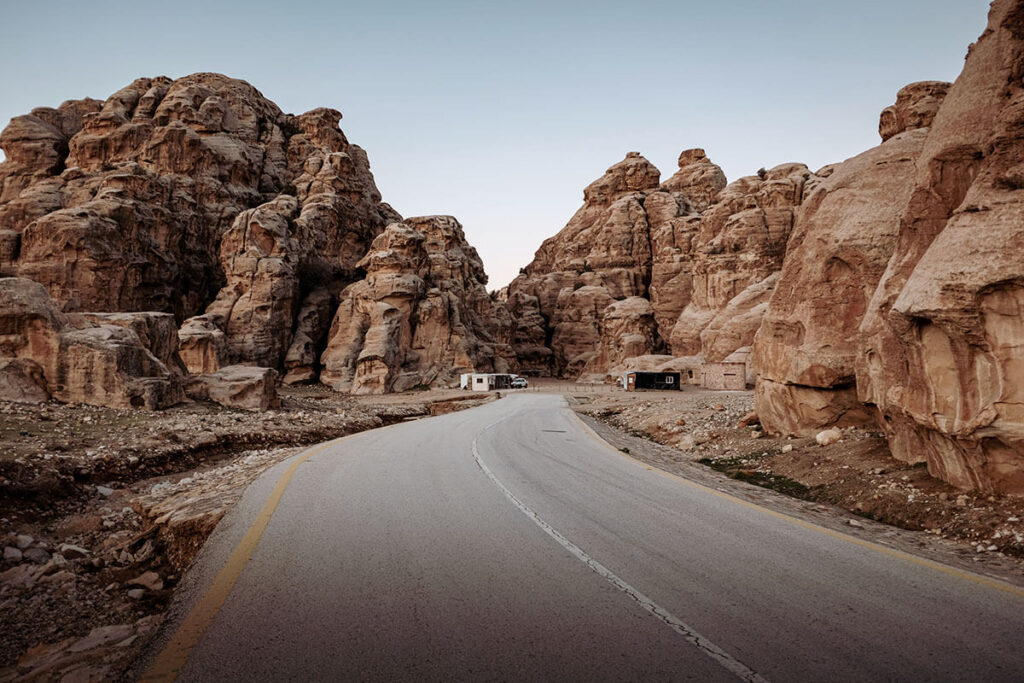

Siq al-Barid, alias Little Petra
Siq al-Barid is located 9 kilometers from the main entrance of Petra, just a short 15-minute drive away. It is believed that Siq al-Barid, better known as Little Petra, was a sort of “suburb” of Petra. It is thought that religious activities took place here and archaeologists believe it served as a temporary resting place for travelers passing through. Given the number of banquet and dining halls, it seems likely that guests were treated with great hospitality.
The canyon is approximately 350 meters long, with walls so high that little sunlight penetrates. Siq al-Barid lives up to its name, meaning cold canyon. Just like Petra, you enter the canyon after walking through a narrow siq. While not as large or long as the siq leading to the Treasury, it evokes a similar sense of awe. Larger, more open spaces within the canyon are connected by narrower passageways. Like in Petra, you’ll find tombs and temples, mixed with “simpler” caves. Water channels and rock-hewn water reservoirs are also clearly visible here.
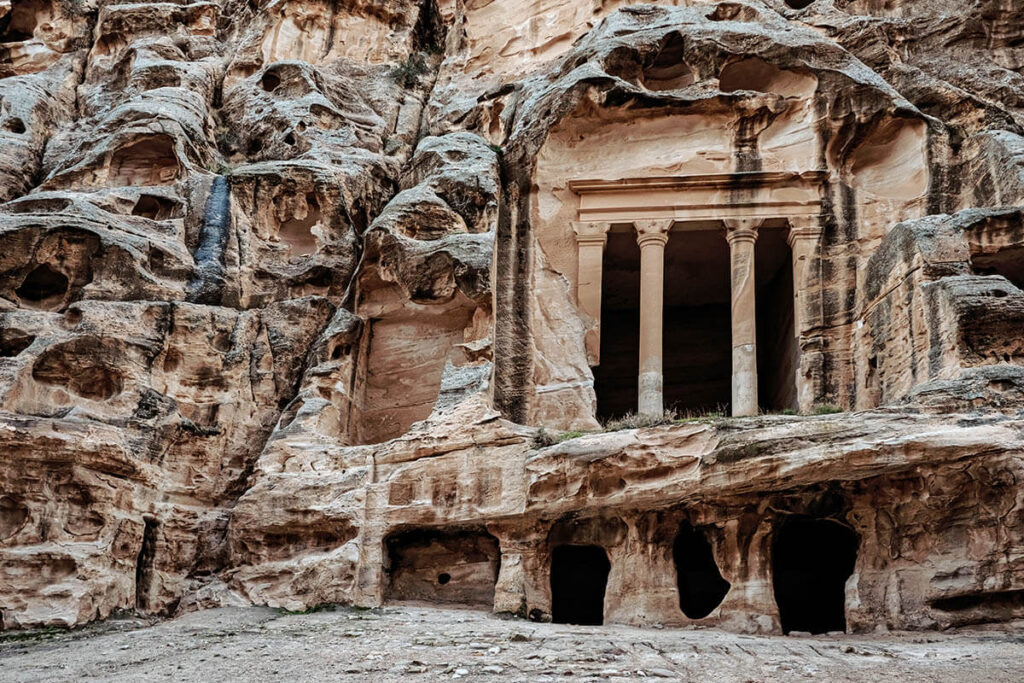
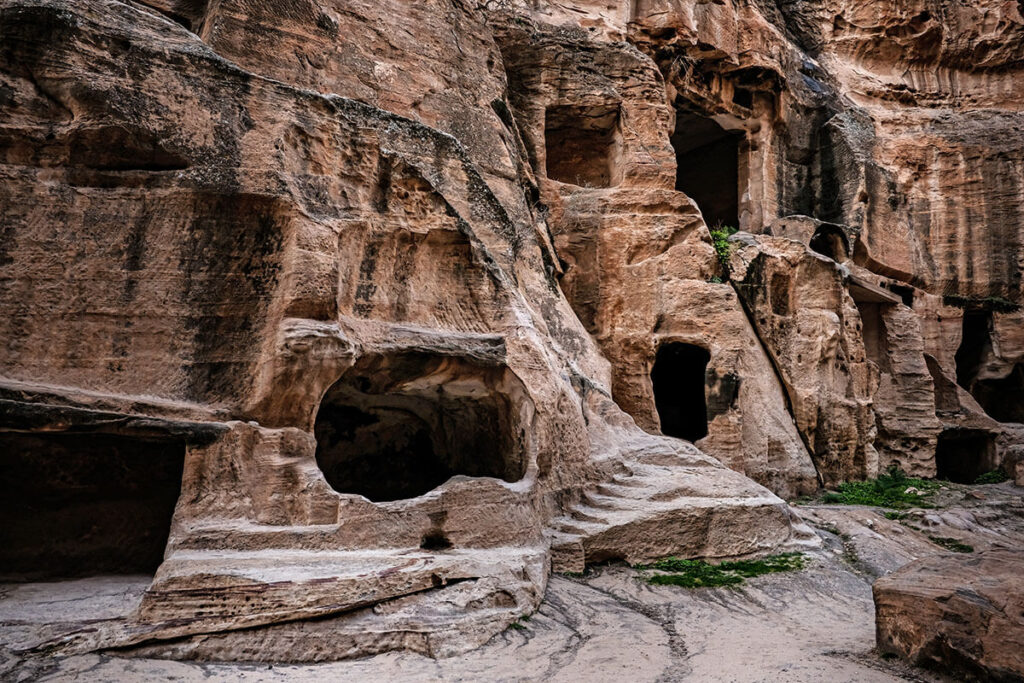
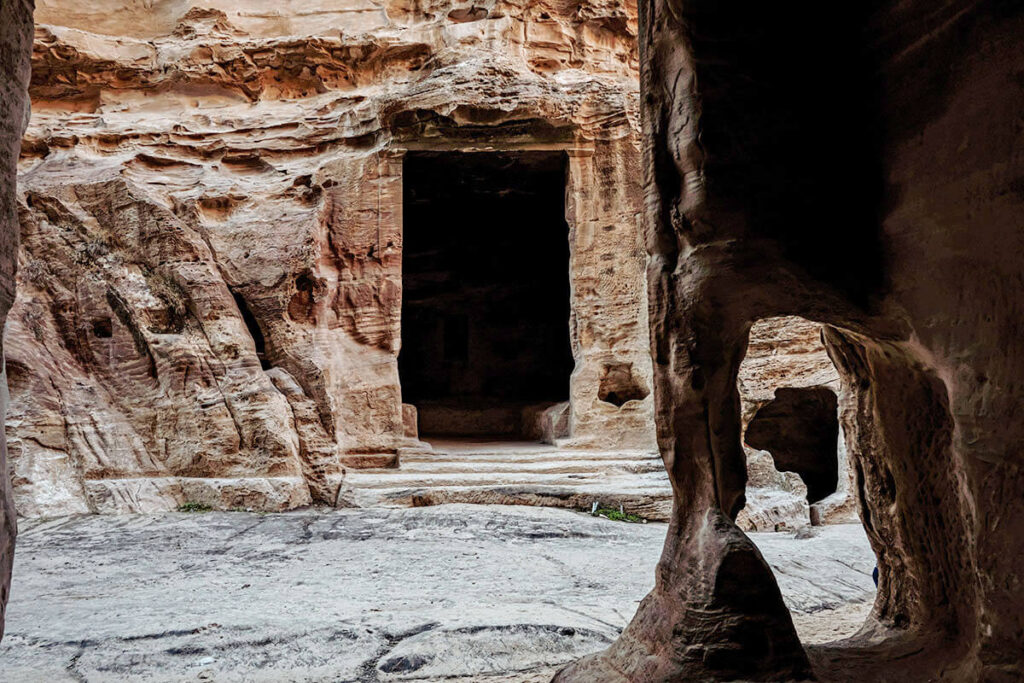
Ceiling fresco of Siq al-Barid
One of the best-preserved and most remarkable spots in Little Petra is the biclinium, a room that features a fresco painted by the Nabataeans on its ceiling. The fresco is a vibrant mix of vine branches and leaves, which, according to archaeologists, suggests that Al Beidha was a site for wine production. You can reach this elevated space via a staircase, which also offers a beautiful view of the rock formations carved across the way.
What’s striking here are the numerous steps that wind their way up and through the site. Everywhere you look, you can see them. The steps are quite worn down and appear to be slippery, but in reality, the sandstone of the rock formations is quite rough, giving you a good grip as you navigate the area.
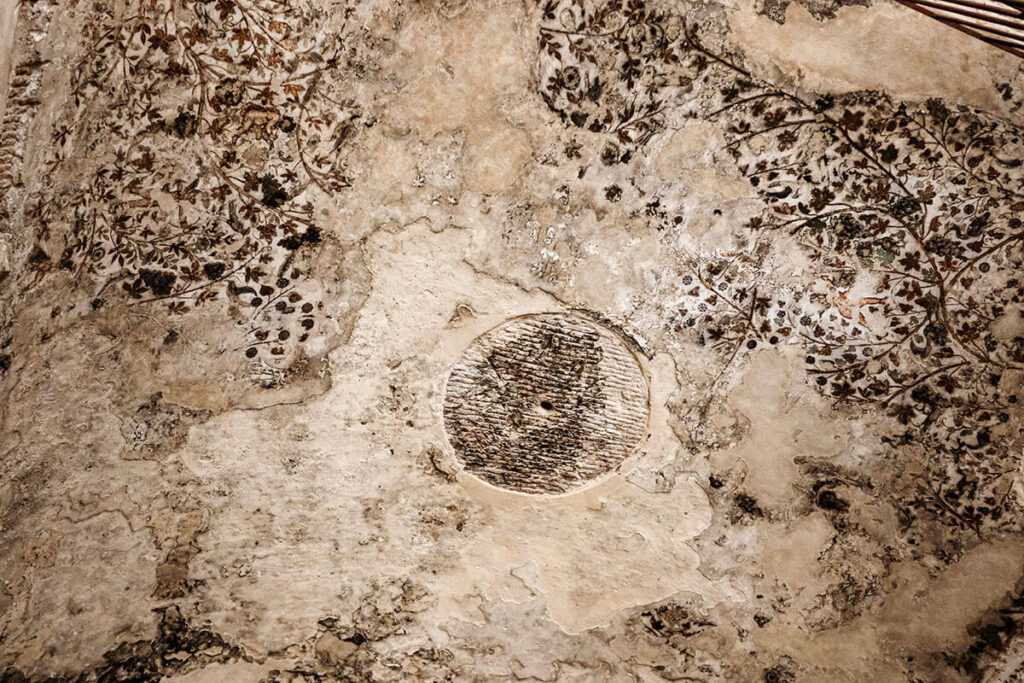

Visiting Little Petra early in the morning
If you arrive early in the morning at Little Petra, you can wander around in peace and solitude, all by yourself. I leave Seven Wonders Luxury Camp, where I’m staying, at 6:00 AM. It’s just a 15-minute walk to Little Petra and it’s already light outside. There’s not a soul on the road, nor in Siq al-Barid itself, which is wonderful. The sun rises at 6:35 AM (end of January), but since there’s no clear horizon, I have a bit more time before the sun appears over the rocks.
At the end of the siq, there’s a narrow “staircase” leading up between two steep rock walls. Just before the stairs, there are a few stalls selling souvenirs. None of the souvenirs are covered, so it seems like the owners must be nearby. Every time I stop to look or take photos of the souvenirs, I expect someone to suddenly appear next to me, but there’s no one around. It’s deserted! Somehow, this gives a reassuring feeling, a sense of trust that people aren’t worried about things being taken when no one’s around. On the other hand, it also feels like you’re visiting a place hastily abandoned by people, as if time here suddenly stopped in an instant.
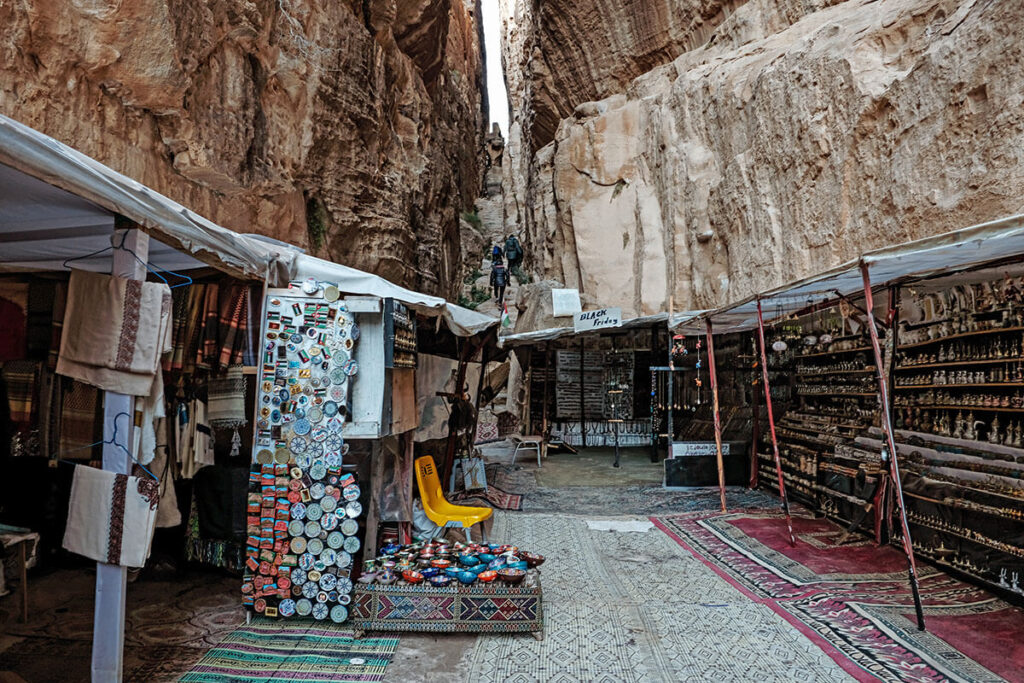
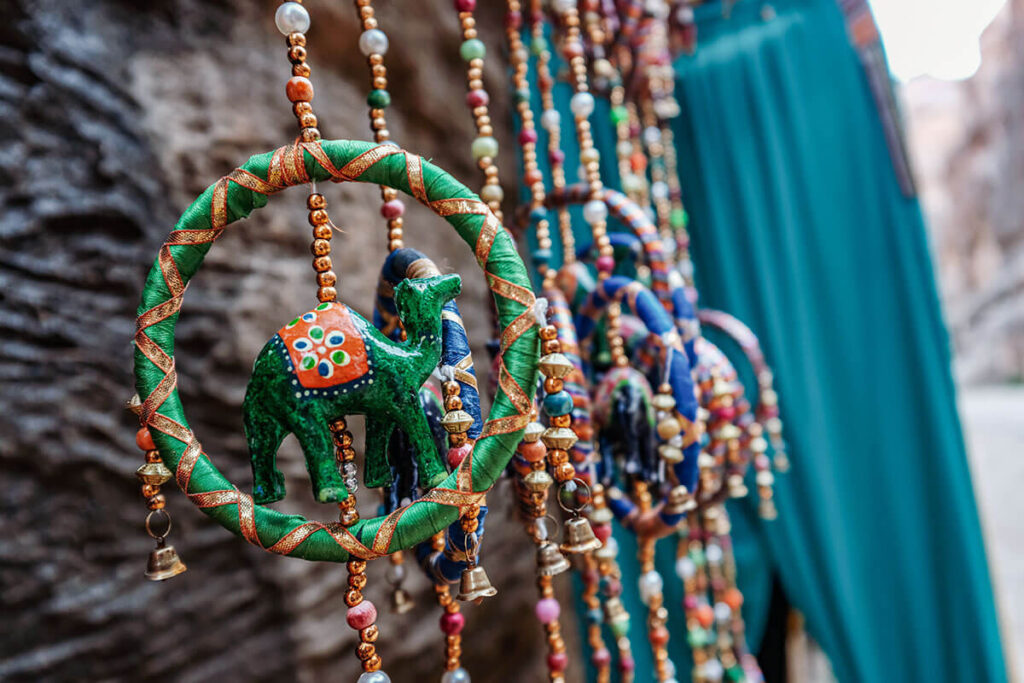
Sunrise in Little Petra
The staircase starts off fairly easy, but soon enough, it turns into quite a bit of climbing and scrambling. Be careful with a camera hanging around your neck, as it tends to hit the rock walls when you navigate the very narrow sections higher up. Once you reach the top, you arrive at a sort of platform, where you have a view over a small canyon surrounded by the characteristic rock formations of this region. It’s a lovely spot to sit and enjoy the silence around you. If you enjoy scrambling, you can climb even higher for a more expansive view.
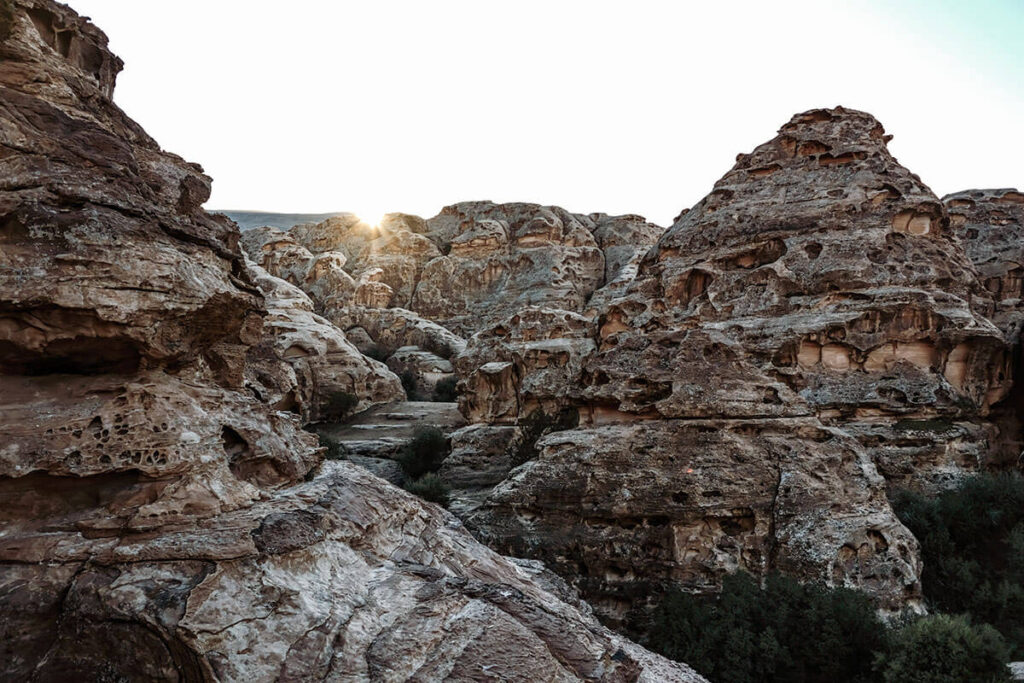
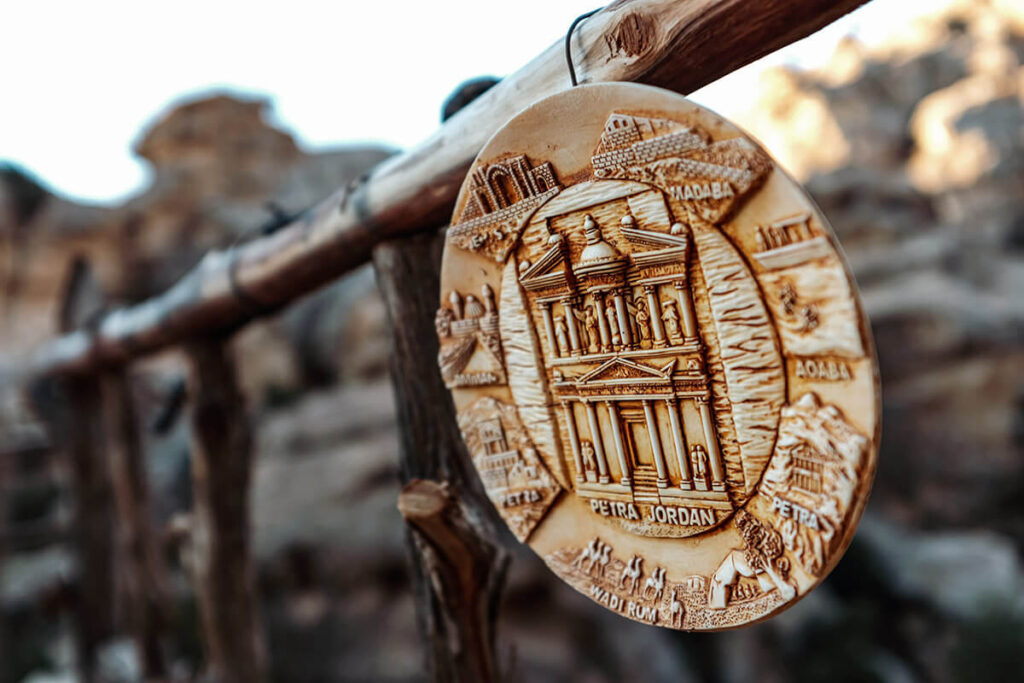
First to Petra or first to Siq al-Barid?
Some people are quite insistent on the advice to visit Little Petra first and then Petra itself. This can work well and is logistically convenient in many cases. For instance, if you want to visit Petra via the backdoor trail, you can park your car at the Petra Visitor Center, pick up your ticket (which you always need, even with a Jordan Pass) and then take a taxi to Little Petra. You can explore Little Petra and then follow the backdoor trail to Petra. The trail itself is doable without a guide, but many spots are unclear, as there are few signs. A guide knows the way and can also provide plenty of information about the area and its history, so I’d definitely recommend a guide for the backdoor trail.
I visit Petra first and then the next morning, Little Petra. I must say, I find it a refreshing change. Of course, I was really impressed with Petra – the colors, the temples, the tombs and the sheer size of it all. But it was a lot, especially with the crowds, the animals and the children handling them roughly. While Little Petra may be much smaller, I love it there. Especially early in the morning when no one else is around. It feels more peaceful and everything sinks in a bit better. So, I wouldn’t stress too much about the advice to visit Little Petra before Petra. If you’re good at putting things into perspective, you can easily visit Little Petra after Petra itself.

Visiting Little Petra with a Jordan Pass
Little Petra is free to visit. However, when we arrive at the entrance, a man at the ticket booth asks to see the Jordan Pass. No problem; we show it, we’ve got it with us anyway. Almost everyone who visits Jordan buys a Jordan Pass in advance. The Jordan Pass grants access to many different attractions. Additionally, when you purchase the Jordan Pass, you don’t need to apply for a visa, which is very convenient. Just make sure you always have the Jordan Pass with you, so you can show it whenever necessary – even when it might not be required!
Staying near Little Petra
There are several accommodations near Little Petra. I personally stayed at the Seven Wonders Luxury Camp, a beautiful camp with very comfortable accommodations.
Exploring Jordan by rental car
Driving through Jordan by rental car is a great way to explore the country. It’s important to rent a car with a good insurance package. A reliable rental service will offer an all-inclusive insurance option, ensuring you’re covered for everything. This means no hidden fees, even when you pick up the car. And in case of any damage, if the rental company charges your credit card for the deductible, a good insurance policy will reimburse you for that as well. This way, you can explore Jordan with peace of mind, knowing you’re fully covered.
